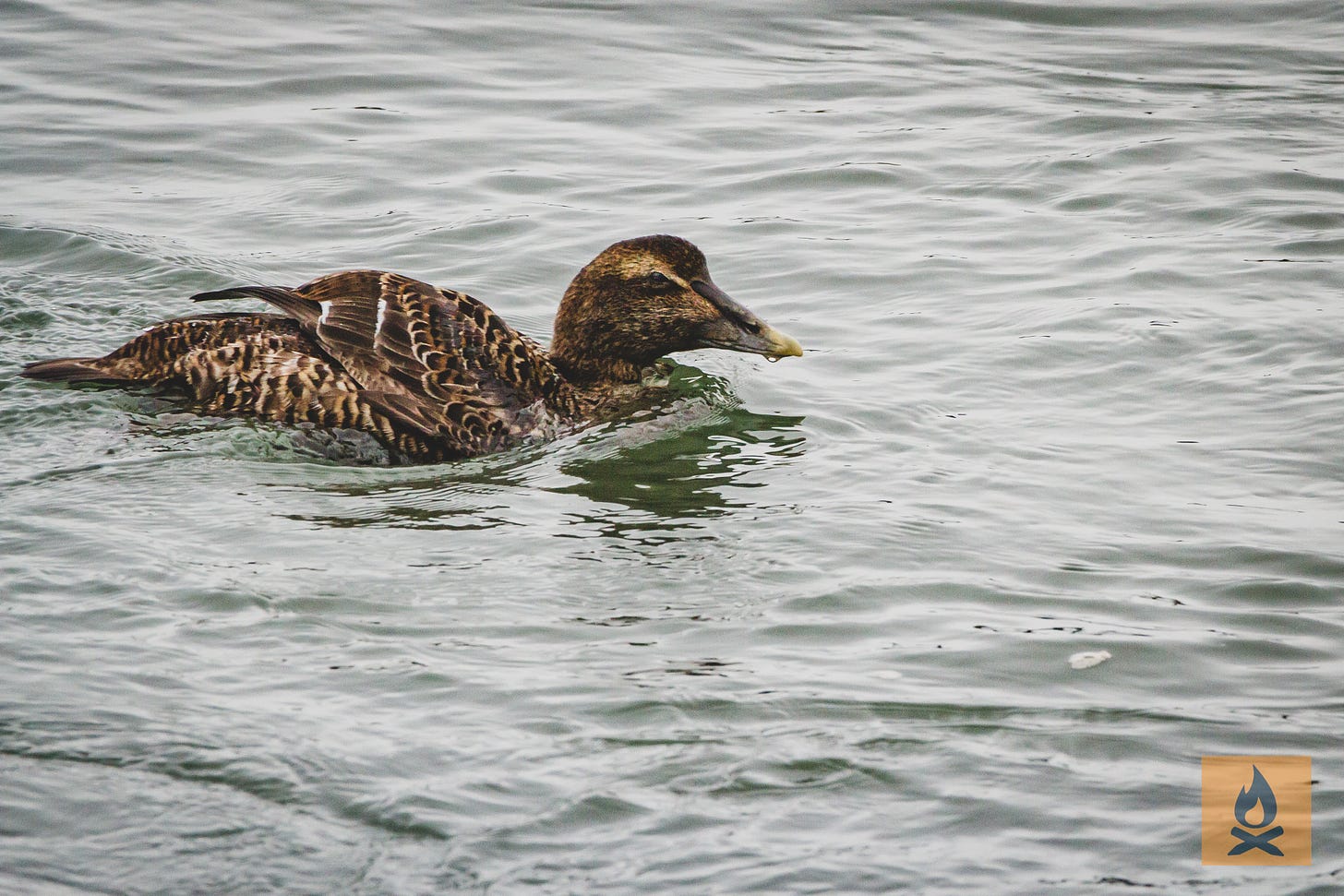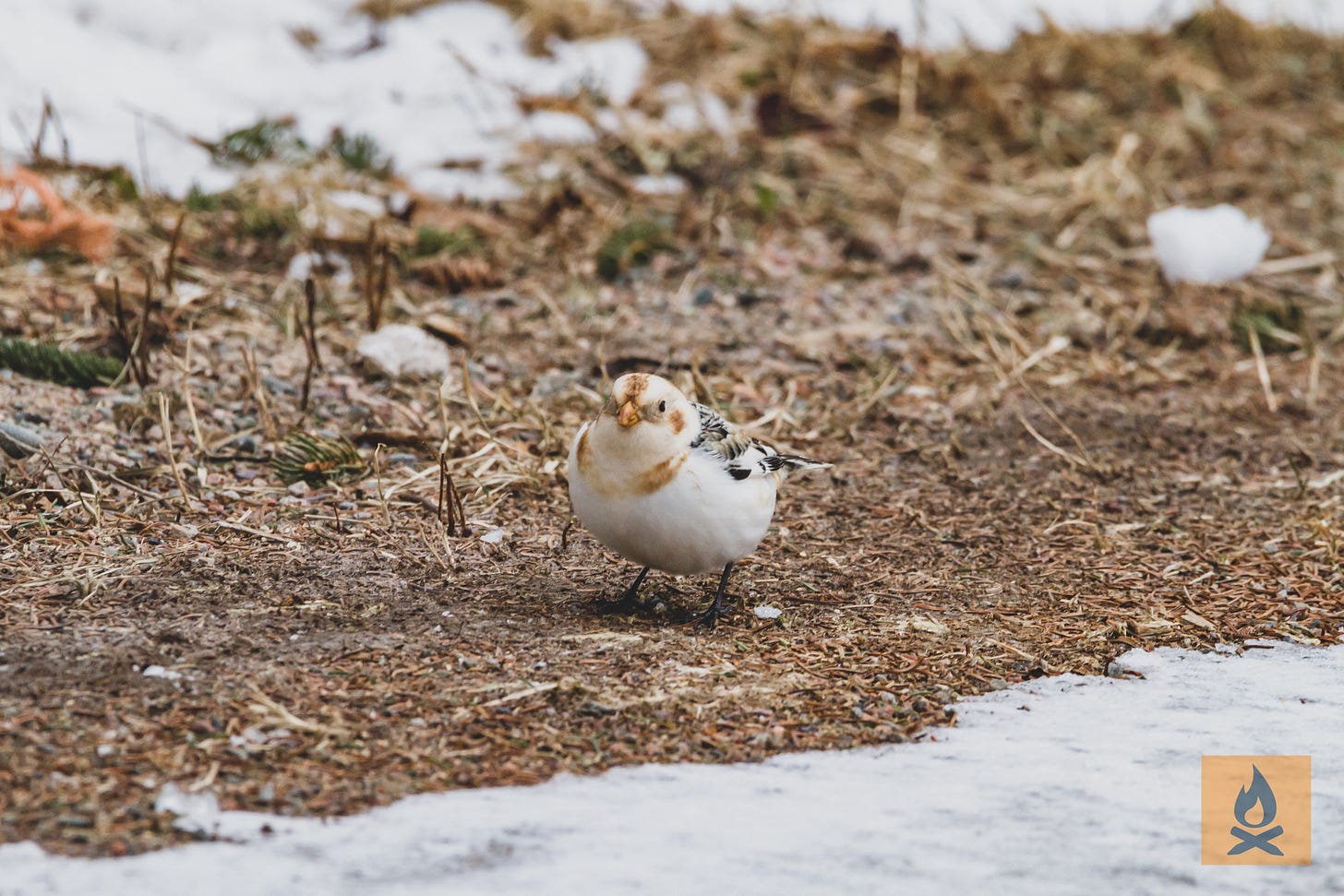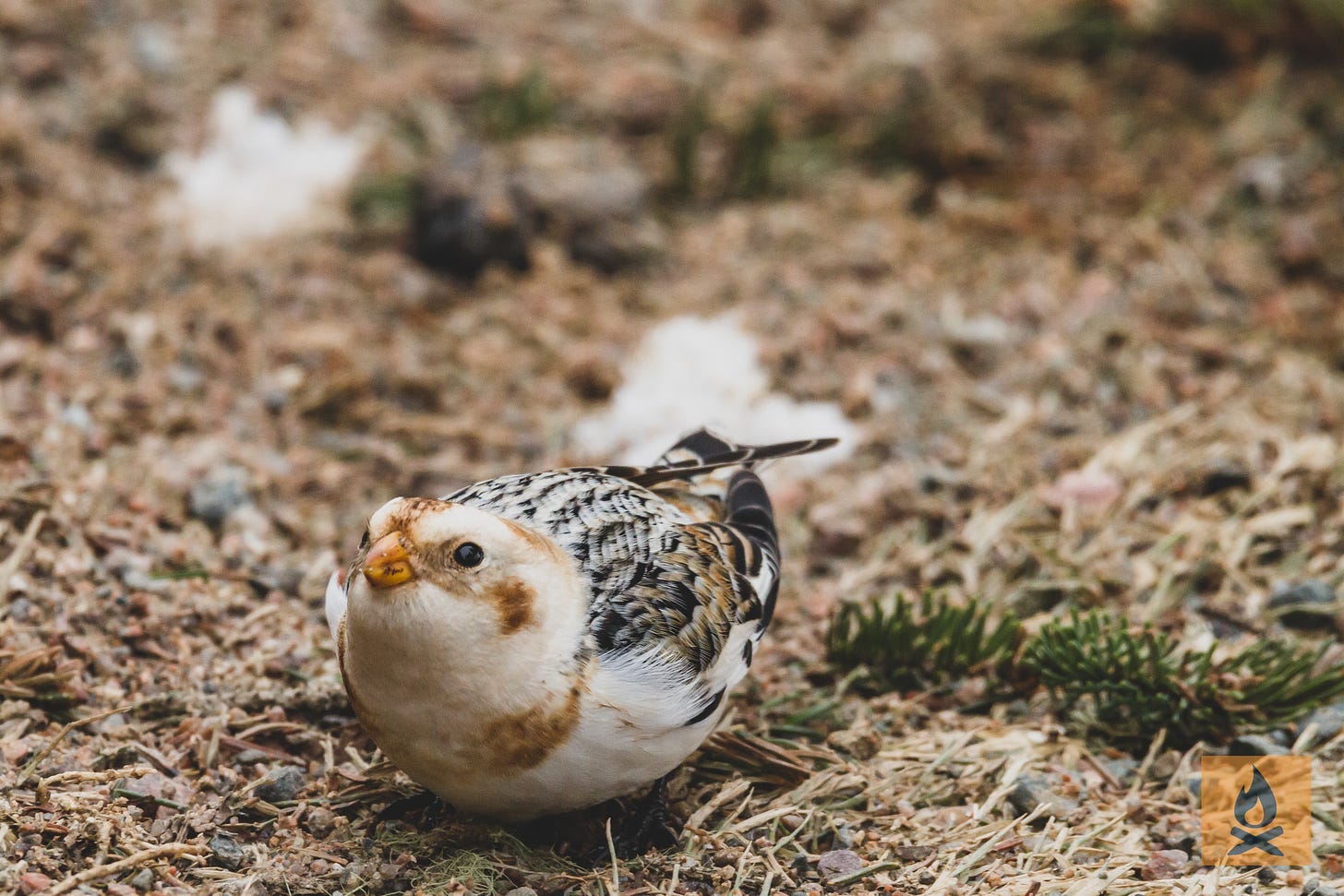#48: The SNBU Sighting
An introduction to a new section of the notebook, and to a new feathered friend.
To get to Crow Island, you leave the Trans-Canada Highway in Musquash1 for route NB-790, a two-lane secondary highway. Much of New Brunswick is linked by these capillaries that snake through lightly-populated forests and coastlines; the farthest digits and limbs of the province are alive with small split-entry houses and bungalows, and houses of worship that always seem to boast an upcoming supper or “Chase the Ace” lotteries. The 790 has these, plus the accessories demanded by its fishing villages: yards with pyramids of lobster traps and buoys hanging from trees.

As small as they may be, our weekly adventures are peaceful spots in my days. Birding just makes them more enjoyable: aside from positively contributing data as a citizen scientist, my forays into birding provide meditative ponds that cool my mind and allow me to concentrate on the here and now.

But it was supposed to be warmer than this.
The bone-numbing bursts of wind lick at my exposed fingers like a snapping tea towel, as I scan the waters for a good shot of the buffleheads, common goldeneyes and eiders. The two Canada geese present are early to return from their winter vacation of hissing at Americans.2 Thankfully, they’re the furthest away in my viewfinder.
Another shutter click of the female eider that keeps re-entering my frame. She’s found a whirlpool, and appears to be enjoying zipping through it before paddling back to get another turn.

I begin to walk down the lane to where Ben is standing on the shores of Crow Harbour, facing Thompson Marsh. When we parked the car, there had been a flash of toasted marshmallow into the pines, but we had lost track through the branches. It seems that the birds weren’t easily spooked, though.
“Stop!”, he whispers as loud as he can, and points to the ground in front of me.

A snow bunting trills like a Star Wars droid as it pecks at the gravel and dead grass. It hops towards me, now undeterred by my presence.

As their name implies, snow buntings (abbreviated to SNBU) love - no, need - the cold. Unlike their Satanic distant cousins across the cove, snow buntings consider New Brunswick to be part of its non-breeding winter grounds. Soon, the males on the ground around me will return to the Arctic - a month ahead of the ladies - to stake out the best rocky real estate for a nesting site.
This was the first time I’d ever seen a snow bunting, but only in writing do I realize that future encounters are not guaranteed as their house hunt becomes more challenging. Especially susceptible to the impacts of climate change, the Arctic region is warming four times faster than the rest of the world3. This has knock-on effects for the adorable birds squeaking around me; according to scientists with the Canadian Snow Bunting Network, “a recent study…has predicted that buntings would find it hard to maintain normal activity in ambient temperatures above just 11.7°C”.4
Learning more about the feathered fellows that surround us on hikes and other adventures can be a bittersweet exercise.

Musquash derives from the Abenaki / Abénaquis word moskwas, for muskrat (Wikitionary. 24 Jul 2022. musquash).
What kind of bird hisses? I’ll tell you: Evil ones, birthed from the 7th circle of hell.
Rantanen M, Karpechko AY, Lipponen A. et al. The Arctic has warmed nearly four times faster than the globe since 1979. Commun Earth Environ 3, 168 (2022).
Anand S. (2023). The Snow Bunting Report (9th annual newsletter). Canadian Snow Bunting Network.


This post is a sheer delight, Bryn - I absolutely loved it! Thank you for introducing me to the fabulous SNBU!
Such a beautifully crafted, vibrant story.